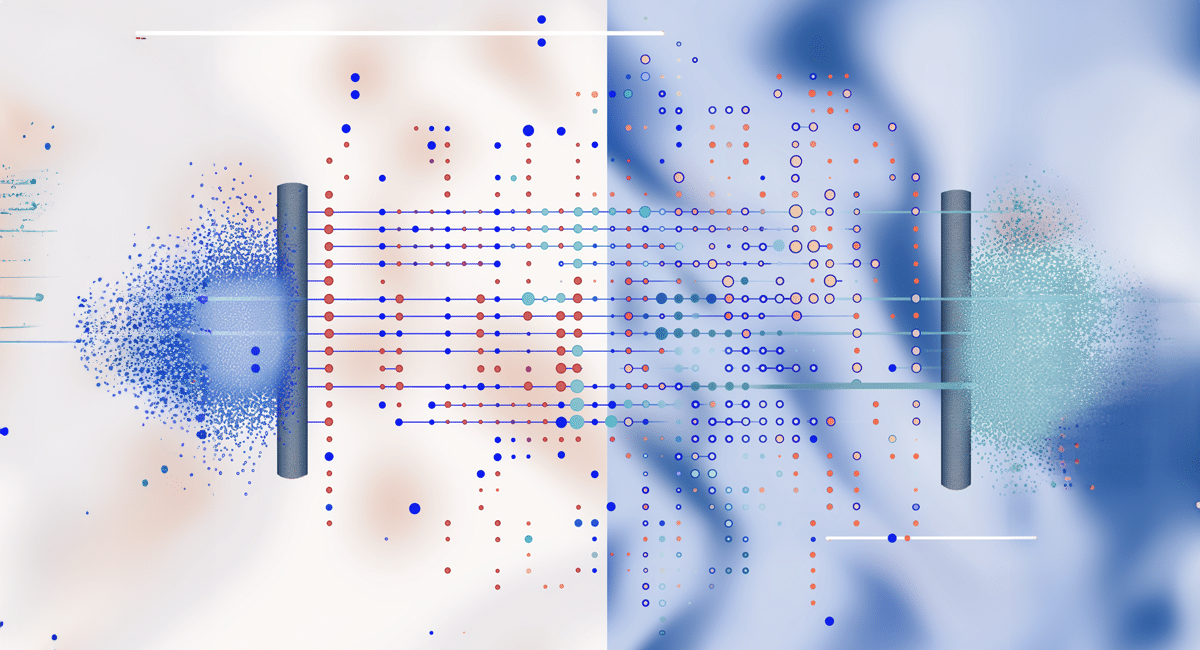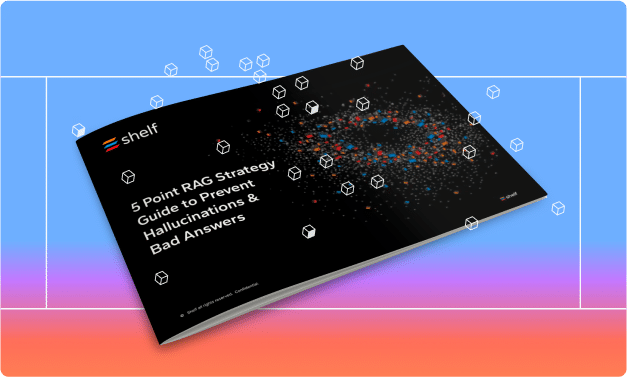A data mesh is a modern approach to data architecture that decentralizes data ownership and management, thus allowing domain-specific teams to handle their own data products. This shift is a critical one for organizations dealing with complex, large-scale data environments – it can enhance scalability, data quality, and agility.
A data mesh is an architectural approach that decentralizes data ownership and management, with the goal to make data more accessible, scalable, and flexible across an organization.
Unlike traditional data architectures that centralize data in a single repository, such as a data lake or a data warehouse, a data mesh treats data as a product and distributes its ownership to domain-specific teams.
These teams are responsible for the data they produce. They ensure its quality, governance, and accessibility. This decentralized approach allows for greater agility and scalability, as teams can manage and optimize their data independently, without being bottlenecked by a centralized data team.
The data mesh architecture is particularly well-suited for large organizations with complex data ecosystems, where different departments or business units generate and use diverse types of data. By empowering these units to manage their own data, it can enhance collaboration, drive innovation, and ultimately enable better decision-making across the organization.

Data Mesh vs. Data Lake
A data lake centralizes all data in one repository, which can lead to silos and governance issues. A data mesh decentralizes data management, giving domain-specific teams ownership of their data. While a data lake focuses on central storage, a data mesh emphasizes distributed ownership, making it more adaptable to complex, evolving data environments.
Data Mesh vs. Data Fabric
A data fabric integrates and connects diverse data sources across environments, focusing on seamless data access. In contrast, a data mesh decentralizes data management, empowering domain teams to own their data. While a data fabric provides a unified data layer, a data mesh prioritizes domain-driven design, allowing for independent, scalable data governance.
Data Mesh vs. Data Warehouse
A data warehouse centralizes structured data for analysis, often requiring uniformity and rigid structures. A data mesh, however, decentralizes data ownership, allowing domain teams to manage and govern their data independently. This approach is more flexible and scalable, supporting diverse data types and real-time needs, unlike the centralized, monolithic nature of a data warehouse.
Why Use a Data Mesh?
It offers several compelling reasons for adoption, particularly for organizations dealing with complex data environments. Here’s why you should consider using a data mesh:
Improved Scalability
It decentralizes data management, allowing each domain team to handle its own data. This distributed approach enables your organization to scale more effectively, as each team can independently manage and optimize its data without creating bottlenecks in a centralized system.
Enhanced Data Quality
It ensures that those closest to the data maintain it by giving ownership of data to domain-specific teams. This leads to better data quality, as the teams responsible have a deep understanding of their data’s context and requirements.
Increased Agility
Using it, domain teams can quickly adapt to changes in their data needs. This decentralized structure allows for faster decision-making and more rapid iteration, helping you stay agile.
Better Collaboration
It fosters collaboration across your organization by encouraging domain teams to work together on data products. This shared responsibility for data management leads to more integrated and aligned business strategies.
Streamlined Governance
Decentralized data ownership allows for more tailored governance practices. Each domain team can establish governance policies that best fit their specific data needs, leading to more effective and context-driven data management.
4 Core Principles of Data Mesh Architecture
The data mesh architecture is built on four key principles that guide its design and implementation. These principles ensure that data remains accessible, high-quality, and effectively managed across the organization.
1. Domain-Oriented Data Ownership
Data is owned by domain-specific teams that are closest to it. This principle decentralizes data management, assigning responsibility to those who understand the data’s context and usage. It fosters accountability and ensures that data is treated as a product, with a focus on quality and relevance.
2. Data as a Product
Data is not just an asset; it’s a product with its own lifecycle. This principle emphasizes that data should be managed with the same care and attention as any other product. Domain teams are responsible for delivering reliable, well-documented, and accessible data products that meet the needs of their users.
3. Self-Serve Data Infrastructure
A self-serve infrastructure enables domain teams to manage their data without relying on a centralized data team. This principle promotes autonomy and agility, allowing teams to access, process, and analyze data independently. It also encourages the use of standardized tools and platforms that make data management more efficient.
4. Federated Computational Governance
Federated governance ensures that data policies and standards are consistent across the organization while allowing for flexibility at the domain level. This principle balances central oversight with domain-specific needs, enabling teams to implement governance practices that suit their unique data requirements, all while adhering to broader organizational guidelines.
Use Cases
A data mesh architecture is particularly beneficial in complex, large-scale organizations where traditional data management approaches may fall short. Here are some key use cases where a data mesh can drive significant value:
1. Large Enterprises with Diverse Data Needs
In large organizations with multiple departments or business units, a data mesh allows each domain to manage its own data products independently. This ensures that data remains relevant, high-quality, and accessible across different parts of the organization, enhancing overall efficiency and decision-making.
2. Real-Time Data Analytics
For organizations requiring real-time insights, a data mesh enables faster data processing and analysis. By decentralizing data ownership, teams can quickly access and analyze data as it is generated, leading to more timely and actionable insights.
3. Complex Regulatory Environments
In industries with stringent regulatory requirements, a data mesh’s federated governance model allows for tailored compliance measures at the domain level. This ensures that each team can meet specific regulatory standards while maintaining overall consistency across the organization.
4. Data-Driven Product Development
Organizations focused on data-driven innovation can benefit from a data mesh by treating data as a product. This approach allows teams to iterate on their data products, improving their quality and relevance over time, which directly supports the development of new, data-driven products and services.
5. Cross-Functional Collaboration
A data mesh encourages collaboration between different teams, as they are jointly responsible for creating and managing data products. This shared ownership fosters better alignment and integration across the organization, leading to more cohesive and effective strategies.
Implementation
Implementation requires careful planning and a shift in how your organization manages and interacts with data. Here’s a high-level overview of the key steps involved in deploying a data mesh architecture:
Step 1. Assess Organizational Readiness
Before implementation, evaluate whether your organization is ready for such a shift. Consider factors like data maturity, existing data infrastructure, and the readiness of your teams to take on decentralized data ownership. This assessment helps identify gaps and prepares your organization for the transition.
Step 2. Define Domains and Data Products
Identify the domains within your organization and define the data products each domain will manage. This involves mapping out the data flows, ownership, and responsibilities for each domain. Clear definitions ensure that every team understands their role in the data mesh and how their data products serve the broader organization.
Step 3. Establish Self-Serve Infrastructure
Set up a self-serve data infrastructure that allows domain teams to manage their data independently. This includes providing the necessary tools, platforms, and training to enable teams to access, process, and analyze their data without relying on a central data team. Standardized tools and practices ensure consistency across the organization.
Step 4. Implement Federated Governance
Develop a federated governance framework that balances centralized oversight with domain-specific flexibility. This framework should include policies, standards, and best practices that guide data management, data quality, and compliance across all domains. It ensures that each team can tailor governance to their needs while adhering to organizational guidelines.
Step 5. Foster a Culture of Collaboration
A successful implementation requires a cultural shift toward collaboration and shared responsibility. Encourage cross-functional teams to work together on data products and governance. Regular communication, training, and workshops can help foster this culture, ensuring that everyone is aligned and engaged in achieving success.
Step 6. Monitor and Iterate
Once the architecture is in place, continuously monitor its performance and impact. Gather feedback from domain teams and adjust the architecture, tools, and processes as needed. Iteration is key to ensuring that the data mesh evolves with your organization’s needs and remains effective over time.
Challenges of the Data Mesh Architecture
While the data mesh architecture offers significant benefits, it also comes with its own set of challenges.
1. Organizational Change Resistance
Transitioning to a data mesh requires a cultural shift toward decentralized data ownership and increased collaboration between teams. Resistance to this change can be a significant challenge, as teams may be accustomed to relying on a centralized data management approach.
Overcoming this resistance involves robust change management strategies, clear communication of the benefits, and ongoing support to help teams adapt to their new roles and responsibilities.
2. Complexity of Implementation
Implementation is a complex and resource-intensive process. It requires rethinking your entire data architecture, establishing new processes, and deploying a self-serve infrastructure. Additionally, defining clear data domains and products can be challenging, especially in large organizations with overlapping functions.
The complexity of managing decentralized data across multiple teams also adds to the difficulty, making it essential to have a well-planned implementation strategy and the right technical expertise in place.
3. Data Governance and Consistency
While federated governance is a core principle of the data mesh architecture, ensuring consistent governance across all domains can be challenging. Each domain may interpret and implement governance policies differently, leading to potential inconsistencies in data quality, security, and compliance.
Balancing the flexibility of domain-specific governance with the need for organizational consistency requires careful planning and ongoing oversight to ensure that data remains reliable and trustworthy across the enterprise.
4. Skill Gaps and Training
The shift to a data mesh requires teams to take on new responsibilities, such as managing their own data products and implementing governance practices. This change can expose skill gaps within teams, as they may not have the necessary expertise in data management, analytics, or governance. Addressing these gaps involves significant investment in training and upskilling.
5. Interoperability and Integration
Data products need to be interoperable and easily integrated across different domains. However, achieving this can be challenging, particularly in organizations with legacy systems or diverse technology stacks.
Ensuring that data products from different domains can work together seamlessly requires careful design of data interfaces, standardization of data formats, and possibly significant upgrades to existing systems.
6. Cost and Resource Allocation
The implementation and maintenance of a data mesh can be costly, both in terms of financial investment and resource allocation. Building a self-serve infrastructure, deploying new tools, and continuously monitoring and improving the system requires substantial resources.
Additionally, the need for specialized skills and ongoing training further adds to the cost. Organizations must carefully assess their budget and resources to ensure that they can support the long-term sustainability of a data mesh.
7. Maintaining Data Quality Across Domains
As data ownership is decentralized, ensuring consistent data quality across all domains can be a challenge. Each domain team is responsible for the quality of its own data products, but without strong governance and clear quality standards, there’s a risk of variability in data quality.
To mitigate this, organizations need to establish rigorous data quality frameworks and provide domain teams with the tools and guidance needed to maintain high standards consistently.
Data Mesh FAQs
Here are some common questions people ask about the data mesh architecture.
Is data mesh obsolete?
No, it is not obsolete. It’s a relatively new and evolving approach designed to address the challenges of modern, large-scale data environments.
Is data mesh the future?
It is considered a forward-looking architecture for organizations dealing with complex and distributed data. Its principles of decentralized data management are gaining traction, making it a strong contender for future data architectures. That said, it isn’t the right approach for every organization.
What is the alternative to data mesh?
Alternatives include traditional centralized architectures like data lakes and data warehouses. These models focus on centralizing data, unlike the decentralized approach of a data mesh.
Who invented data mesh?
Zhamak Dehghani, a technologist at ThoughtWorks, is credited with conceptualizing and popularizing the data mesh architecture.
What is the difference between microservices and data mesh?
Microservices are an architectural approach for building software applications as a collection of loosely coupled services. Data mesh applies similar decentralization principles to data architecture, focusing on distributed data ownership and management.
What is the opposite of data mesh?
The opposite would be a centralized data architecture, such as a traditional data warehouse, where data is managed and governed centrally.
What problem does data mesh solve?
Data mesh addresses the challenges of scaling data management in large, complex organizations. It solves issues related to data silos, governance, and agility by decentralizing data ownership and treating data as a product.
Is a Data Mesh Right for You?
By decentralizing data ownership and management, a data mesh empowers domain teams, enhances scalability, and fosters innovation. A data mesh is best suited for large, complex enterprises with diverse data needs and a commitment to collaboration and governance. For these organizations, embracing a data mesh can drive agility and maintain high data quality, positioning them for success in a data-driven future.
However, a data mesh is not the right fit for every organization. You might opt for a traditional centralized data infrastructure. Think critically about your needs and the right data infrastructure for your organization.




